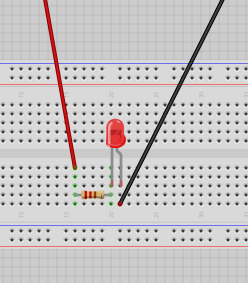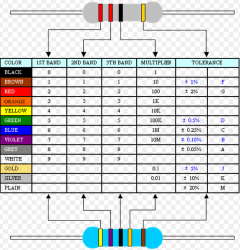Difference between revisions of "DI Electronics Workshop"
From Wikicliki
| Line 1: | Line 1: | ||
== Experiment 1 == | == Experiment 1 == | ||
| − | [[File:circuit1.png]] [[File:resistors.png|240px]] | + | [[File:circuit1.png]] [[File:resistors.png|240px]] [[File:circuit2.jpg]] |
* '''LED''' - small side = long leg = positive | * '''LED''' - small side = long leg = positive | ||
* Connectors - red wires positive / black wires negative or ground (why GND? GND = grounding for discharge) | * Connectors - red wires positive / black wires negative or ground (why GND? GND = grounding for discharge) | ||
Revision as of 11:53, 28 October 2013
Experiment 1
- LED - small side = long leg = positive
- Connectors - red wires positive / black wires negative or ground (why GND? GND = grounding for discharge)
- Resistor - if you didn't have it the LED would blow / it makes sure the led does not draw all of the 5v current / 220 Ohms Resistor - red red brown is 22 *10
- Resistance is calculated in ohms. So how do we figure out the current? The Lab power supply has a switch for amps/volts you can see its about 0.01.
- V=IR: See more about Ohm's Law
- Using Multimeter: solid line dc, wavy line ac, turn to 20
Trivia
- UK Mains has a 50Hz hum. Depending on where or what time (eg: when eastenders ends and everyone puts on the kettle) this hum will change. It is alleged that you can find out what time or location it is from the hum - mains hum signature?


